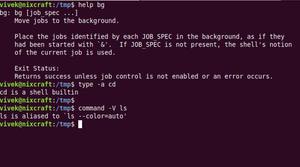Spring-Context之六:基于Setter方法进行依赖注入
本文内容纲要:Spring-Context之六:基于Setter方法进行依赖注入
上文讲了基于构造器进行依赖注入,这里讲解基于Setter方法进行注入。在Java世界中有个约定(Convention),那就是属性的设置和获取的方法名一般是:set+属性名(参数)及get+属性名()的方式。boolean类型稍有不同,可以使用is+属性名()方式来获取。
以下是一个示例。
MessageHandler.java
12 3 4 5 6 7 8 9 10 11 12 13 14 15 16 | publicclassMessageHandler{privateMessageServicemessageService;publicMessageServicegetMessageService(){returnmessageService;}publicvoidsetMessageService(MessageServicemessageService){this.messageService=messageService;}publicStringhandle(){returnmessageService.sendService();}}
|
使用Setter方法注入如下所示。
12 3 4 | <beanid="messageService"class="huangbowen.net.DependecyInjection.ConstructorInjection.SimpleMessageService"/><beanid="messageHandler"class="huangbowen.net.DependecyInjection.SetterInjection.MessageHandler"><propertyname="messageService"ref="messageService"/></bean>
|
如果property的name为messageService,那么必须在类中有个叫做setMessageService的方法,这样才能完成注入。如果将MessageHandler.java中的setMessageService方法改为setMessageService1,那么注入就会失败,失败message如下所示。
12 3 4 5 6 7 | ...java.lang.IllegalStateException: Failed to load ApplicationContext...Caused by: org.springframework.beans.factory.BeanCreationException: Error creating bean with name 'messageHandler' defined in class path resource [spring-context.xml]: Error setting property values; nested exception is org.springframework.beans.NotWritablePropertyException: Invalid property 'messageService' of bean class [huangbowen.net.DependecyInjection.SetterInjection.MessageHandler]: Bean property 'messageService' is not writable or has an invalid setter method. Did you mean 'messageService1'?...
|
当然可以同时使用构造器注入和setter方法注入。
Person.java
12 3 4 5 6 7 8 9 10 11 12 13 14 15 16 17 18 19 20 21 22 | publicclassPerson{privateStringname;publicPerson(Stringname){this.name=name;}privateintage;publicintgetAge(){returnage;}publicvoidsetAge(intage){this.age=age;}publicStringgetName(){returnname;}}
|
bean定义如下:
12 3 4 | <beanid="person"class="huangbowen.net.DependecyInjection.SetterInjection.Person"><constructor-argvalue="Tom"/><propertyname="age"value="20"/></bean>
|
要实现一个bean,即可以使用构造器注入,也可以使用setter注入,甚至可以在一个bean中综合使用这两种方式。那么在真正开发中应该作何取舍那?一般来说,使用构造器注入的依赖必须是强制的依赖,而使用setter注入的依赖则是可选的依赖。使用构造器注入生成的对象是完全初始化了的,用户可以直接拿来用,但是相比于setter方法而言用户也就失去了定制化的能力。如果你发现构造器参数过多,那么很可能说明该类承担的职责过多,应该从设计解耦的角度对类的职责进行拆分。使用setter注入的对象好处是,用户可以按需重新注入新的属性。
另外在进行依赖注入时,可以将某些属性抽出来成为一个元素,或者将元素内联成为一个属性。比如ref这个属性。
12 3 | <beanid="messageHandler"class="huangbowen.net.DependecyInjection.SetterInjection.MessageHandler"><propertyname="messageService"ref="messageService"/></bean>
|
它与以下xml配置完全等价。
12 3 4 5 | <beanid="messageHandler"class="huangbowen.net.DependecyInjection.SetterInjection.MessageHandler"><propertyname="messageService"><refbean="messageService"/></property></bean>
|
value属性也可以独立为元素。
12 3 4 | <beanid="person"class="huangbowen.net.DependecyInjection.SetterInjection.Person"><constructor-argvalue="Tom"/><propertyname="age"value="20"/></bean>
|
其等价于:
12 3 4 5 6 | <beanid="person"class="huangbowen.net.DependecyInjection.SetterInjection.Person"><constructor-argvalue="Tom"/><propertyname="age"><value>20</value></property></bean>
|
也可以显式指定value的类型。
12 3 4 5 6 | <beanid="person"class="huangbowen.net.DependecyInjection.SetterInjection.Person"><constructor-argvalue="Tom"/><propertyname="age"><valuetype="int">20</value></property></bean>
|
比如有一个属性是个boolean值,如果想将其注入为true的话,不指定具体类型的话,Spring可能会将其作为字符串true对待。当然Spring会尝试将传入的字符串转换为setter方法希望的类型,但这种自动转换有时候并不是你期望的,这种情况下你就需要显式指定其类型。
本例中的源码请在我的GitHub上自行下载。
本文内容总结:Spring-Context之六:基于Setter方法进行依赖注入
原文链接:https://www.cnblogs.com/huang0925/p/3606382.html
以上是 Spring-Context之六:基于Setter方法进行依赖注入 的全部内容,
来源链接:
utcz.com/z/295813.html




